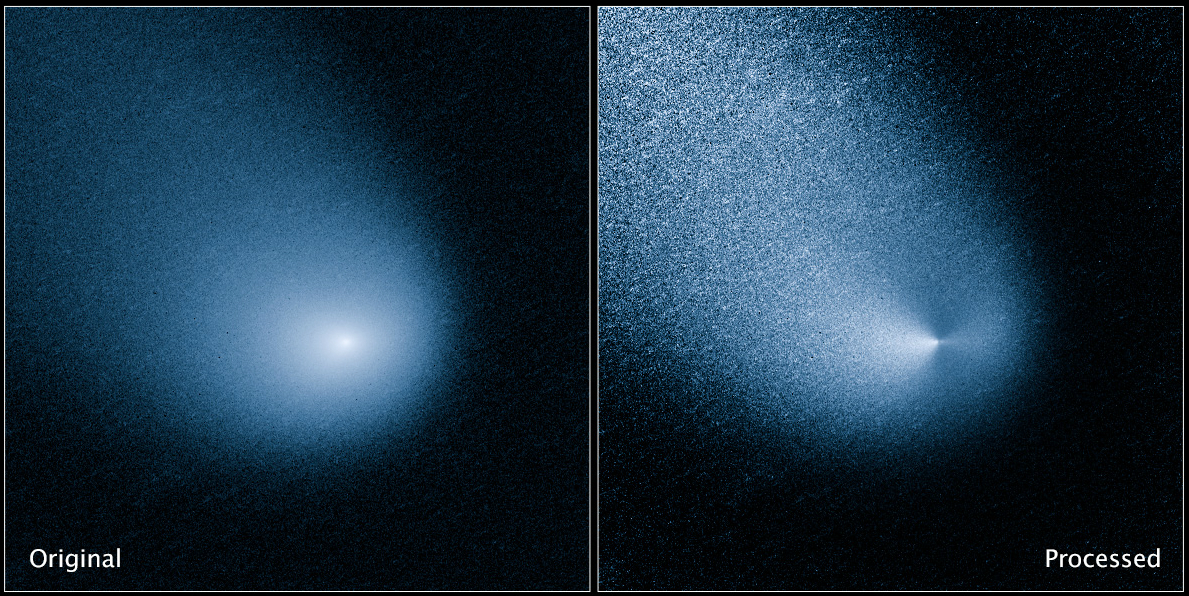JANUARY 1, 1801: On the first day of the 19th Century, Giuseppe Piazzi at the Palermo Observatory in Sicily discovers the first-known asteroid, now known as (1) Ceres. As a resident of the “main asteroid belt” between Mars and Jupiter, Ceres remains the largest-known asteroid (diameter 950 km), and is now formally designated a “dwarf planet.” NASA’s Dawn spacecraft arrived there in 2015 and remains in orbit around it. “Main belt asteroids” is the subject of this week’s “Special Topics” presentation.
JANUARY 1, 2019: NASA’s New Horizons mission encounters the Kuiper Belt object (486958) Arrokoth (unofficially known as “Ultima Thule” at the time). The New Horizons images revealed Arrokoth as being a “contact binary” object, i.e., what was originally two separate objects (one slightly larger than the other) now stuck together. The Kuiper Belt and contact binaries are subjects of future “Special Topics” presentations.
JANUARY 2, 1905: Charles Perrine at Lick Observatory in California discovers the seventh known moon of Jupiter, now named Elara. It is about 86 km in diameter, and orbits around Jupiter at an average distance of 0.078 AU (11.7 million km) and a period of 260 days. Elara is a dark object and, like most of the outer moons of the giant outer planets, may be a captured asteroid.
JANUARY 2, 2004: NASA’s Stardust spacecraft flies through the coma of Comet 81P/Wild 2, collecting samples (via an extremely lightweight and porous substance called “aerogel”) for return to Earth two years later. Comet 81P/Wild 2 is this week’s “Comet of the Week.”
JANUARY 2, 2014: The very tiny asteroid 2014 AA, discovered the previous day by the Mt. Lemmon survey based in Arizona, enters Earth’s atmosphere above the southern Atlantic Ocean and disintegrates. This is the second-known incident (of four thus far) of this kind; these are discussed in a future “Special Topics” presentation.
JANUARY 2, 2019: A strong signal of a comet transiting the star Beta Pictoris – which would have soon evaporated as it fell onto that star – is detected in data taken with NASA’s Transiting Exoplanet Survey Satellite (TESS) mission. This was the first confirmed detection of an “exocomet.” The details are discussed in a paper authored by Sebastian Zieba and Konstanze Zwintz of the University of Innsbruck in Austria and others; the subject of exocomets is discussed in a future “Special Topics” presentation.
JANUARY 2, 2020: The “active asteroid” (6478) Gault will pass through perihelion at a heliocentric distance of 1.859 AU. Gault is a future “Comet of the Week,” and the subject of “active asteroids” is discussed in a future “Special Topics” presentation.
JANUARY 3, 1918: The near-Earth asteroid (887) Alinda is discovered by Max Wolf at Heidelberg Observatory in Germany, the third-known near-Earth asteroid. It makes occasional approaches to Earth, including one to 0.082 AU in 2025. Near-Earth asteroids are the subject of next week’s “Special Topics” presentation.

JANUARY 3, 2013: Comet Siding Spring C/2013 A1 is discovered by Rob McNaught during the course of the Siding Spring Survey in New South Wales. On October 19, 2014, Comet Siding Spring passed 1/3 of a lunar distance from Mars and became the first comet ever to be imaged from the surface of another planet. It is a future “Comet of the Week.”
JANUARY 4, 2019: The asteroid 2019 AQ3 is discovered by the Zwicky Transient Facility (ZTF) program based at Palomar Observatory in California. 2019 AQ3 has an orbital period of 165 days and an aphelion distance of 0.77 AU (just beyond the orbit of Venus); the orbit is inclined 47 degrees with respect to the ecliptic. At the time of its discovery, 2019 AQ3 had the smallest orbit of any known asteroid, but that record has since been broken by another ZTF discovery, 2019 LF6.
JANUARY 4, 2020: The annual Quadrantid meteor shower will be at its peak. The Quadrantids have a peak Zenithal Hourly Rate (ZHR) in excess of 100 meteors per hour, making it one of the strongest of the annual showers; it does, however, have a very sharp and narrow peak. The predicted peak time in 2020 is around 8:20 UT, which is favorable for North America; the moon will be two days past its First Quarter phase and should not interfere too much with observations. The Quadrantids appear to be associated with the asteroid (and likely defunct comet) (196256) 2003 EH1.
More from Week 1:
Comet of the Week Special Topic Free PDF Download Glossary
Ice and Stone 2020 Home Page


